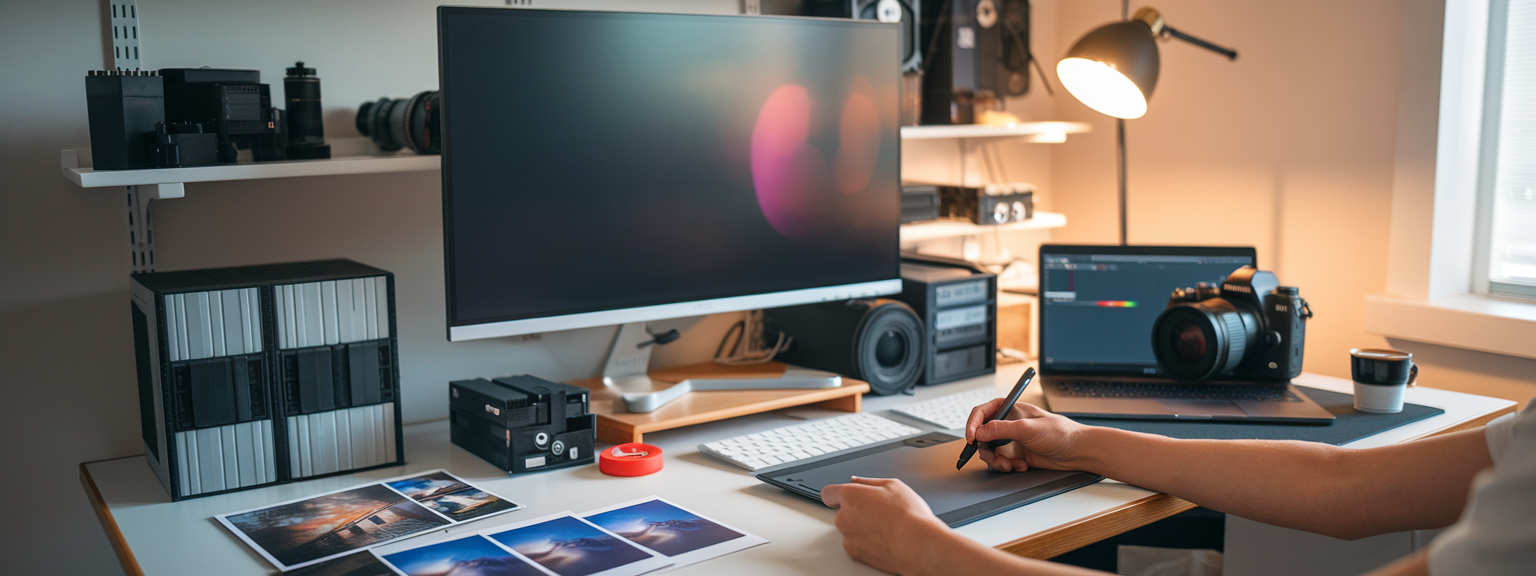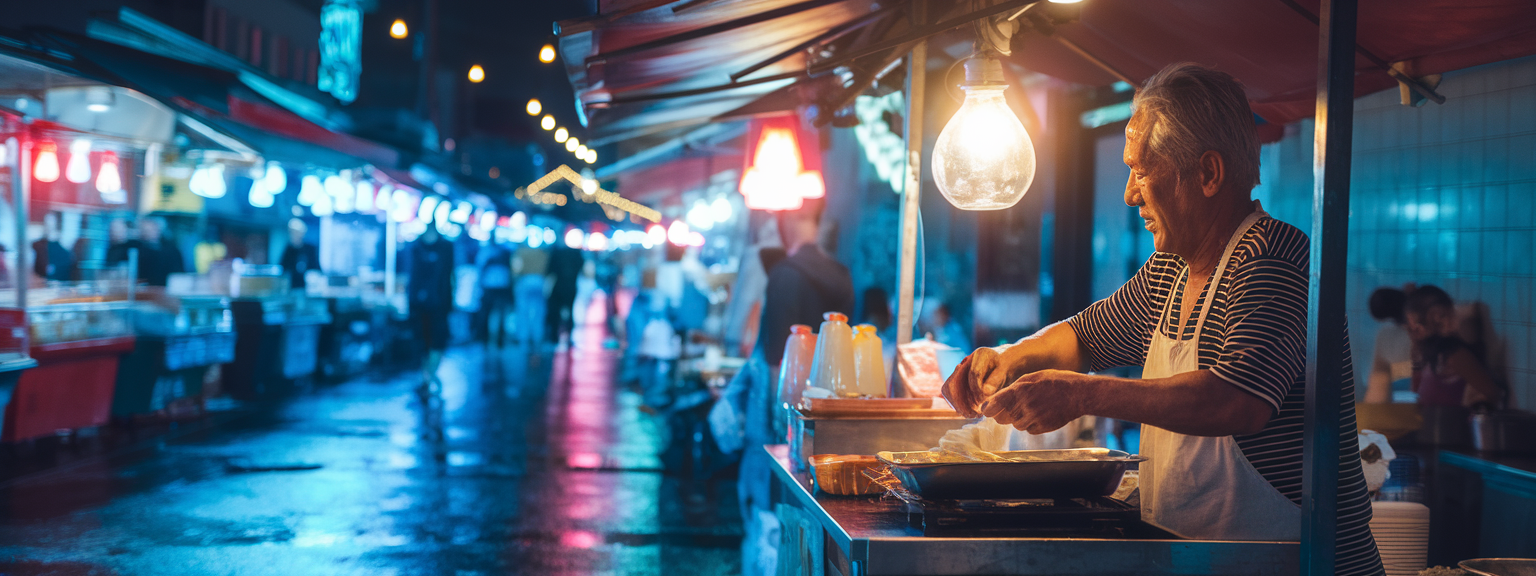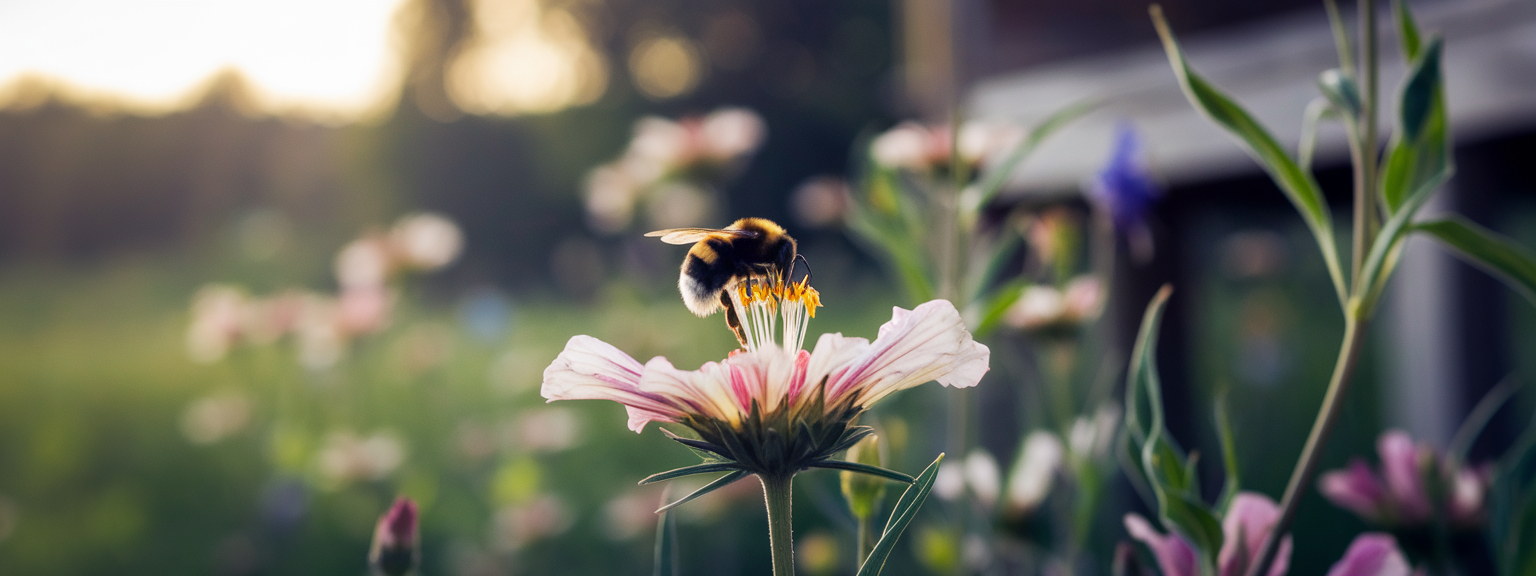Mastering Post-Processing Essentials: Complete Photo Editing Workflow

Post-Processing Essentials define a reliable, repeatable editing workflow that turns RAW captures into polished final images. In this comprehensive guide you will learn a structured editing workflow, including RAW processing, color grading, noise reduction, sharpening, and batch editing. The focus is practical. You will get step-by-step guidance, retouching techniques, and troubleshooting for common issues in photo post-processing and editing workflow.
📝 Step-by-Step Guide: Post-Processing Essentials
Ingesting, Backup, and Cataloging
Begin every job with a clear ingest and backup strategy. Import RAW files into a logical folder structure (Year/Client/Event). Use checksum-verified copy tools such as rsync or ChronoSync to prevent corrupted files. Create at least two copies: a local external drive and an off-site cloud backup (Backblaze or Google Drive). Proper catalog management is part of the Post-Processing Essentials and reduces risk.
Efficient Culling
- First pass: fast reject obvious failures (soft focus, closed eyes) — use PhotoMechanic for speed.
- Second pass: rate final selects (3–5 stars) and mark top images for full edits in Lightroom or Capture One.
- Cull at 50–100% to evaluate focus, eyes, and highlight detail.
Global RAW Adjustments
Start in a RAW editor — Lightroom Classic, Adobe Camera Raw (ACR), or Capture One. Set the camera profile first (Adobe Color or Camera Neutral). Correct white balance using the eyedropper on a neutral area or a color checker. Adjust exposure using the histogram. Recover highlights and open shadows with the Highlights and Shadows sliders. Enable lens corrections to remove distortion and chromatic aberration. These steps are core to Post-Processing Essentials because they preserve the full dynamic range in the RAW file.
Selective Local Adjustments
Move to local edits next. Use graduated filters for skies, radial filters for subject emphasis, and an adjustment brush for dodge & burn. Apply luminance or color range masks to target specific tones. For example, dodge the subject’s face by +0.25 exposure and burn the background by -0.35 to guide the viewer’s eye. Advanced AI masks in Lightroom and Capture One speed this work, but refine masks manually when necessary.
Noise Reduction and Sharpening Strategy
Apply noise reduction before aggressive sharpening. For high ISO images, start conservatively: Luminance 10–25, Detail 50, Contrast 0–10. Use AI denoisers (Topaz DeNoise AI or DxO PureRaw) for difficult files. After denoising, sharpen using masking to limit sharpening to edges. In Lightroom, try Amount 40–70, Radius 0.8–1.2, Detail 20–35, Masking 50–80. The balance between noise reduction and sharpening is one of the most critical Post-Processing Essentials.
Color Grading and Final Tone Control
Use the HSL/Color Mixer to refine individual hues. Add global presence with Vibrance (+5 to +20) and apply subtle color grading in the Color Grading panel for mood. For cinematic style, warm highlights (hue ~40, sat ~6–10) and cool shadows (hue ~200, sat ~6–10) often work well. Use curves for fine control. Maintain consistent color across images in a set to preserve style.
Advanced Retouching Techniques
For deeper retouching, open images as Smart Objects in Photoshop. Use spot removal for minor blemishes, frequency separation for skin smoothing that preserves pores, and dodge & burn on 50% gray layers to sculpt form. Use Liquify sparingly and always on separate layers to preserve reversibility. These retouching techniques are central to professional Post-Processing Essentials.
Export, Output Sharpening, and Archival
Export a high-quality master (TIFF or PSD in ProPhoto or Adobe RGB) as part of your archive. Then create deliverables: JPEG sRGB for web (long edge 2048–3000 px, quality 75–85), and print-ready files at 300 PPI. Apply output sharpening appropriate to the destination. Maintain consistent naming conventions and metadata during export. These final steps close the loop on the Post-Processing Essentials workflow.
📌 Practical Applications: Post-Processing Essentials
Portraits and Headshots
Portraits prioritize accurate skin color, subtle retouching, and eye clarity. Start with RAW exposure correction and white balance. Use local dodge & burn, frequency separation for skin, and targeted sharpening for eyes and hair. Preserve skin texture and avoid over-smoothing to maintain a natural look.
Weddings and Event Photography
Speed and consistency matter. Use PhotoMechanic for culling and Lightroom for batch edits. Create base presets for ceremony and reception lighting. Sync white balance and exposure across similar images, then refine local adjustments. Batch editing and presets are essential components of Post-Processing Essentials for event work.
Landscape and Travel
Focus on dynamic range and clarity. Recover highlights, bring up shadow detail without introducing noise, and use graduated filters for skies. For HDR or bracketed files, merge conservatively and fine-tune color grading to match the scene mood. Preserve natural color accuracy while using color grading to enhance storytelling.
Night and Astrophotography
Stack exposures when possible to reduce noise. Apply strong but natural luminance noise reduction and mask sharpening to avoid amplifying residual noise. Use dedicated tools like DeepSkyStacker or Sequator and consider Topaz DeNoise AI for final denoising.
Product and E-commerce
Ensure accurate color, clean backgrounds, and consistent dimensions. Use spot healing to remove dust, apply perspective correction, and export standardized images for catalogs. Batch editing, templates, and consistent color profiles are critical in a product workflow.
What aspect of your editing workflow would you most like to speed up: culling, color grading, noise reduction, or batch exports?
Applying the Post-Processing Essentials by genre ensures each image receives the appropriate attention. Whether optimizing for skin tones in portraits or dynamic range in landscapes, the core steps—RAW processing, local adjustments, and export strategy—remain consistent.
💡 Tips & Tricks: Post-Processing Essentials
Practical Shortcuts and Tool Choices
- Always shoot RAW to preserve RAW processing latitude and avoid compression artifacts.
- Calibrate your monitor with hardware tools (X-Rite or Datacolor) to maintain consistent color across devices.
- Use virtual copies (Lightroom) to test multiple color grades without duplicating disk space.
- Create genre-specific presets and LUTs for an efficient editing workflow that still allows fine-tuning.
Try building one solid base preset this week and use it as a starting point for ten sessions. You will save hours and maintain visual consistency.
AI Tools and Automation
AI tools accelerate many Post-Processing Essentials tasks. Use Mask AI for subject selection, DeNoise AI for complex noise profiles, and Lightroom’s AI assist for quick sky and subject masks. However, always review AI results and refine manually to retain natural appearance.
Non-destructive Workflow Habits
Work non-destructively: use virtual copies, smart objects, layers, and masks. Archive a master TIFF/PSD and maintain RAW + master for future rework. This practice is a cornerstone of professional Post-Processing Essentials.
📸 Sample Scenario
Outdoor Golden Hour Portrait — Step-by-Step
Scenario: Sony a7 IV, 85mm f/1.8, RAW, ISO 200, 1/200s, f/2.0. Follow these Post-Processing Essentials steps for a high-quality portrait:
- Ingest & Backup: Verify checksums, copy to Year/Client folder, generate cloud backup.
- Culling: Select top 3 images for expression and focus.
- Global RAW Edit (Lightroom): Profile Adobe Color, Exposure +0.25, Highlights -45, Shadows +35, Whites +10, Blacks -12, Texture +10, Clarity +4.
- Local Edits: Adjustment brush on face (Exposure +0.10, Shadows +10, Clarity -10), radial vignette to isolate subject.
- Retouch (Photoshop): Smart Object, frequency separation radius 8 px, dodge & burn on 50% gray layer at 10–15% brush opacity.
- Sharpen & Denoise: Luminance 15, Detail 50; Sharpen Amount 45, Radius 1.0, Masking 75.
- Color Grading: HSL Orange +5 hue, -3 saturation, +10 luminance; Color Grading subtle teal shadows and warm highlights.
- Export: Master TIFF (ProPhoto), web JPEG sRGB 2048 px long edge, Quality 85.
✅ Key Do’s for Effective Usage
Checklist of Best Practices
- Do shoot RAW and preserve original files.
- Do make non-destructive edits using layers, masks, and virtual copies.
- Do calibrate your monitor for reliable color work across devices and prints.
- Do maintain a consistent export profile per output: sRGB for web, Adobe RGB/ProPhoto for print masters.
Treat these items as non-negotiable elements of your Post-Processing Essentials toolkit. They protect your work and create predictable results for clients.
❌ Common Mistakes to Avoid
Frequent Errors and How to Prevent Them
- Overprocessing: Avoid extreme clarity, saturation, or noise reduction. Make incremental adjustments.
- Ignoring RAW: Editing JPEGs limits highlight recovery and white balance flexibility.
- Skipping Calibration: Uncalibrated monitors lead to inconsistent color between screen and print.
- Applying One Preset to All: Use presets as starting points, not final solutions.
🔄 Troubleshooting & FAQs
Common Questions and Practical Answers
Q: How do I recover blown highlights in RAW files? A: Lower Highlights, pull back Whites slightly, and reduce Exposure if needed. Use local highlight recovery brushes and check the histogram. If clipping is extreme, reconstruct in Photoshop using nearby tones.
Q: My noise reduction makes images look plastic. How can I keep detail? A: Use conservative luminance values (10–30) then sharpen with masking. For stubborn noise, try Topaz DeNoise AI which separates noise from detail more effectively. If you have multiple frames, stacking is preferable.
Q: When should I edit RAW versus JPEG? A: Always RAW when available. RAW provides maximum dynamic range and better white balance control. Use JPEG only for quick social shares or when RAW is not available.
Q: What output sharpening should I use for web and print? A: For web, use moderate export sharpening in sRGB with long edges sized to reduce over-sharpening (2048–3000 px). For print, sharpen for final resolution (300 PPI) and test print proofs when possible.
Q: What AI tools improve productivity? A: Topaz DeNoise AI and Sharpen AI for noise and detail; Luminar Neo for quick creative edits; Adobe’s Masking AI for fast subject/sky selection. Use ImagenAI or Photomechanic for culling automation. However, always refine AI outputs manually.
Q: How do I fix banding in gradients? A: Work in 16-bit when editing, avoid extreme curve adjustments, and add subtle grain (0.3–0.5%) to break banding. Exporting in a higher bit-depth or using dithering in Photoshop can also help.
Q: Why does my exported photo look different on other devices? A: Device color profiles and lack of calibration cause differences. Export sRGB for web to minimize variation and calibrate your monitor to reduce surprises.
Q: How do I keep consistent color across varying lighting? A: Use a gray card or color checker on location. Create white balance presets per lighting type and sync them across similar images during batch editing.
🖼️ Bringing It All Together
Workflow Checklist
- Pre-shoot: RAW, WB reference, batteries, and memory backups.
- Ingest & Backup: Structured folders, checksum, cloud copy.
- Cull: Fast pass, then select top images for full edit.
- RAW Global Edit: Profile, WB, exposure, lens corrections.
- Local & Advanced Retouch: Dodge & burn, frequency separation, healing.
- Noise Reduction & Sharpening: Denoise first, then mask sharpening.
- Export & Archive: Master TIFF/PSD plus web-ready JPEGs in sRGB.
Ready to streamline your editing? Download our checklist, try the recommended preset, and start applying these Post-Processing Essentials to your next shoot.
Mastering these Post-Processing Essentials is a practical investment. Implement the checklist, automate repetitive tasks where appropriate, and always preserve RAW masters for future needs. Consistent application of these steps produces reliable, high-quality results across genres and clients.

![[Stunning Images Lighting And Editing] [Studio portrait with dramatic lighting and color grading to demonstrate stunning images]](https://lenslesson.com/wp-content/uploads/2025/11/advanced-stunning-images-lighting-composition-editing.png)
![[Travel Photography Tips Sunset Shot] [Photographer framing a mountain sunrise to demonstrate travel photography tips]](https://lenslesson.com/wp-content/uploads/2025/11/travel-photography-tips-sunset-shot.png)


![[Portrait Photography Lighting Setup] [Portrait photographer adjusting softbox to achieve flattering portrait photography of a smiling subject]](https://lenslesson.com/wp-content/uploads/2025/11/portrait-photography-softbox-lighting-setup.png)
![[Essential Photography Gear Flat Lay] [Flat lay of essential photography gear: camera, lenses, tripod, and camera bag]](https://lenslesson.com/wp-content/uploads/2025/11/photography-gear-essentials-flatlay.png)
